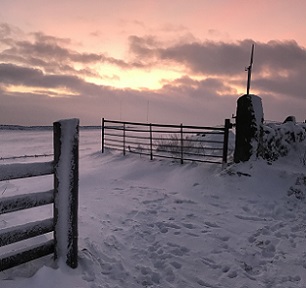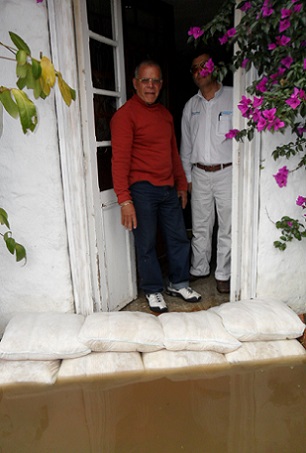 Snowy fields at Scapegoat Hill, Huddersfield. Pic by Andy Hirst from AH! PR.
Snowy fields at Scapegoat Hill, Huddersfield. Pic by Andy Hirst from AH! PR.
 FloodSax alternative sandbags keep filthy floodwater out of homes and businesses and would make an ideal practical Christmas present
FloodSax alternative sandbags keep filthy floodwater out of homes and businesses and would make an ideal practical Christmas present
What will the weather be like on Christmas Day 2021 … will it be a white Christmas?
With gales battering the UK and snow falling during December 2021 hopes must be raised there will be a white Christmas … but what is the Met Office’s weather forecast for Christmas Day 2021?
Well, the forecast now says that temperatures will be above or around average for this time of year – that’s a high of 7°C (45°F) and a low of 2°C (35°F) which means it’s going to be milder over the 2021 festive period than it has been earlier in the month.
According to the Met Office: “Going into the Christmas period it’s likely to be milder than earlier in the month with temperatures near to, or above normal, although some colder spells remain possible. It is likely to become more settled around Christmas and towards New Year with increased chance of overnight frost and fog during clearer spells.”
So it may be white because it's frosty rather than white because it's snowy.
This will be a change from the days leading up to Christmas as, following Storm Barra, it will remain unsettled with showers, longer spells of rain which could turn heavy along with the chance of gales.
Generally speaking, the chances of a white Christmas for the large parts of the UK is very rare as late December is only the start of the time when it’s likely to snow in winter with more snow expected in January, February and March.
There has only been widespread Christmas Day snow where more than 40% of weather observation stations in the UK reported snow on the ground four times since 1960—in 1981, 1995, 2009 and 2010.
According to the Met Office: “White Christmases were more frequent in the 18th and 19th centuries, even more so before the change of calendar in 1752 which effectively brought Christmas Day back by 12 days. Climate change has also brought higher average temperatures over land and sea and this has generally reduced the chances of a white Christmas.”
With gales, rain and snow comes flooding and many people don’t realise that local councils have no responsibility to provide sandbags.
Many now advise people to use FloodSax alternative sandbags instead. They look like white sandbag covers but when FloodSax come into contact with water their special gelling polymer absorbs 20 litres which transforms them from being as light as a pillowcase to more effective than traditional sandbags in around 8 minutes. This makes them ideal for flood prevention, flood protection and flood mitigation.
FloodSax are vacuum-packed so are space-saving to store and quick and easy to deploy. In their dry state FloodSax are thin with a large surface area so are ideal to soak up drips, leaks and spills indoors in hard-to-reach places such as beneath boilers, below radiators and underneath pipes.
Flooding is the greatest natural disaster risk in the UK with an estimated 1 in 6 properties in England and Wales, 1 in 11 properties in Scotland and 1 in 34 properties in Northern Ireland now at risk of flooding. Six of the 10 wettest years on record have occurred since 1998 so climate change can be seen to be having a major impact on this.
According to the Association of British Insurers (ABI) the average claim for a flooded business is £70,000 – that’s seven times higher than the average non flood claim which is around £11,500.
The average costs of flooding claim on home insurance is around £32,000.